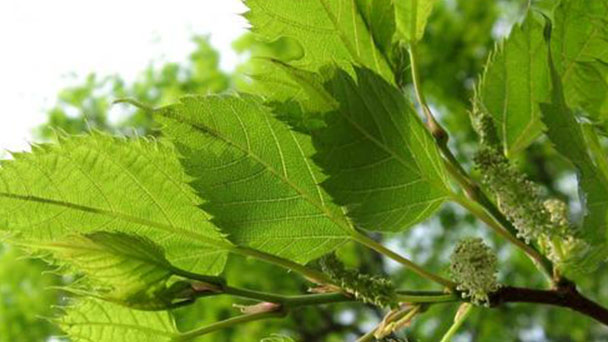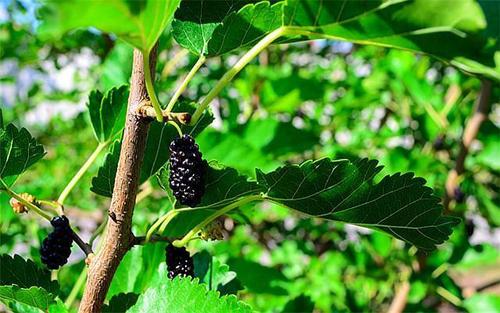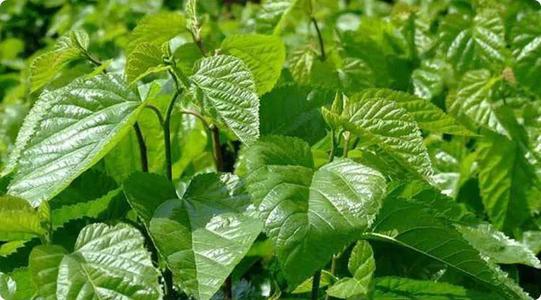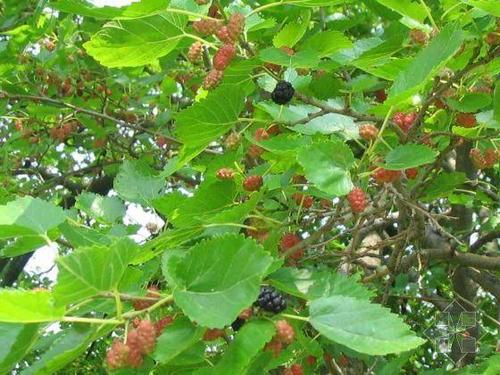Mulberry Profile - Everything You Should Know About Mulberry
Written by Maggie
Dec 06 2022

The Mulberry is a deciduous tree of the genus Mulberry in the order nettles and can reach a height of 15 meters. The trees are rich in whey and have yellow-brown bark. The leaves are fodder for silkworms. Wood can be made utensils, branches can make large baskets, mulberry bark can be used as raw materials for paper making, mulberry can be used for food and wine making, leaves, fruits and root bark can be used as medicine.
Mulberry Picture

Morphological Characteristics of Mulberry
The Mulberry is a tree or shrub, 3 to 10 m in height, up to 15 m in height, with a DBH of 50 cm or more, with thick bark and grey, with irregular shallow longitudinal fuses. Leaves are ovate or broadly ovate, 5-15 cm long, base rounded to shallow cordate, margin coarsely serrate, sometimes variously divided, surface bright green, glabrous, abaxially sparsely hairy along veins, vein axils tufted; Flowers are unisexual, axillary or in the axils of bud scales, with leaves; Mulberry has multiple fruits, ovate-elliptic, 1-2.5 cm long, red or dark purple when ripe. Flowering period is April - May, and the fruit period is May - August.
Growth Habit and Distribution of Mulberry
Mulberry prefers a warm and humid climate with a little shade. Germination begins above 12℃, the appropriate temperature for growth is 25-30℃, above 40℃ is inhibited, and growth stops when the temperature drops below 12℃. Mulberry is resistant to drought, flood, or barren.Good adaptability to soil.
It originated in central and northern China and is now cultivated from northeast to southwest provinces and regions, and from northwest to Xinjiang.North Korea, Japan, Mongolia, central Asian countries, Russia, Europe and other places as well as India, Vietnam are also cultivated.
The Main Varieties of Mulberry
Morus alba L. var. Multicaulis (Perrott.) Loud.) is different from Morus alba L. var. Multicaulis (Perrott.) Loud. Poly Fruit cylindric, 1.5-2 cm long, pale green or purplish black when ripe. Because the leaves are big, the meat is thick and juicy, making it a good feed for silkworms. It is cultivated in Jiangsu, Zhejiang, Sichuan and Shaanxi of China.

Mulberry Propagation Methods
Seeds
Purple ripe mulberry was harvested, pulp was rubbed off, seeds were washed, and then seeded or stored in wet sand. Sowing can be in spring, summer and autumn. In autumn sowing can be used in the new seed. Soak the seed in warm water at 50℃ before sowing, let it cool naturally, then soak it for 12 hours. Store the accelerated buds in wet sand, keep it wet frequently, sow seeds when the seed coat is broken and exposed to white. Make furrows 20-30 cm apart, the furrows are 1 cm deep, and use 7.5-15 kg for 2 meters per 1 hour. Turn the soil. The seedling emergence takes about 10 days.The seedling height is 3-4 cm thin, weak and strong, and fill the seedling.In spring and autumn, plant seedlings 10 to 15 cm apart.
Grafting
Cut the scion 20d before grafting, store in wet sand, separate the cortex and xylem at the cutting mouth of the root stock into bags, and then insert the scion until it is inserted tightly. The buds are grafted, either t-shaped or tubular (socket) in spring and summer.
Layering
In early spring, the mother plant was fixed horizontally on the ground, buried in the trench, exposed to the top, soil compaction, and separated from the mother after rooting. Transplanting occurs in spring or fall.In line, the plant was 2 meters ×0.4 meters apart and the diameter of the hole was 0.5-0.7 meters. Rotten manure was applied at the bottom of the hole, a layer of thin soil was spread, and then planted. After filling the soil, the plants were lifted up to stretch the roots, and then the heart soil was filled, compacted and watered.
Plant Culture of Mulberry
In ancient China, Chinese people propagated Mulberry and catalpa trees in front of their houses, so the word "Mulberry" was often used to represent their home and hometown.

Latest Updated
- Benefits of Bugleweed - 7 Science-backed Health Benefits
- Bugleweed Dangers & Side Effects - Is It Poisonous?
- How to Plant Evergreen Trees - What You Should Know
- When to Plant Evergreens - Grow Guide for Evergreen Trees
- 12 Wonderful Evergreen Shrubs for Your Garden
- 12 Popular Evergreen Plants with Pictures for Beginners
- When And How To Prune A Lilac Bush Like a Pro
- How to Grow & Care for Lilac Vine (Hardenbergia Violacea)
- Japanese Lilac Tree (Syringa Reticulata) Care & Propagation Guide
- Shumard Oak Pros and Cons - What to Know
Popular Articles
- Winter maintenance of Antirrhinum Majus
- How to Grow Terminalia Mantaly Tree
- How to Grow and Care for Crossostephium Chinense
- How to grow Antirrhinum Majus in spring
- Peristeria Elata (Dove Orchid) Profile: Info & Care Guide
- Underwatered Snake Plant (Sansevieria Trifasciata) - Signs And How To Fix
- How to Care for Brazilian Jasmine Plant (Mandevilla Sanderi)
- How to Grow & Care for Graptopetalum Purple Delight in Summer
- Rosa Chinensis (China Rose): Plant Growing & Care Tips
- How to Care for Baby Sun Rose (Aptenia Cordifolia)